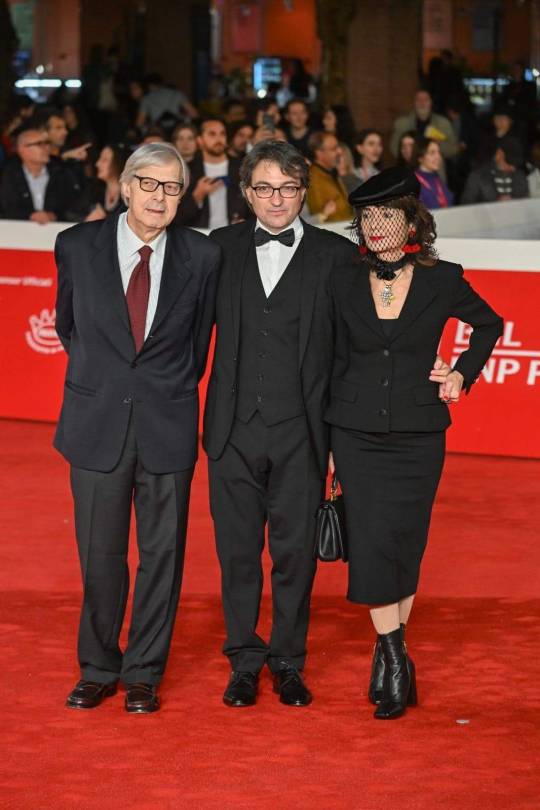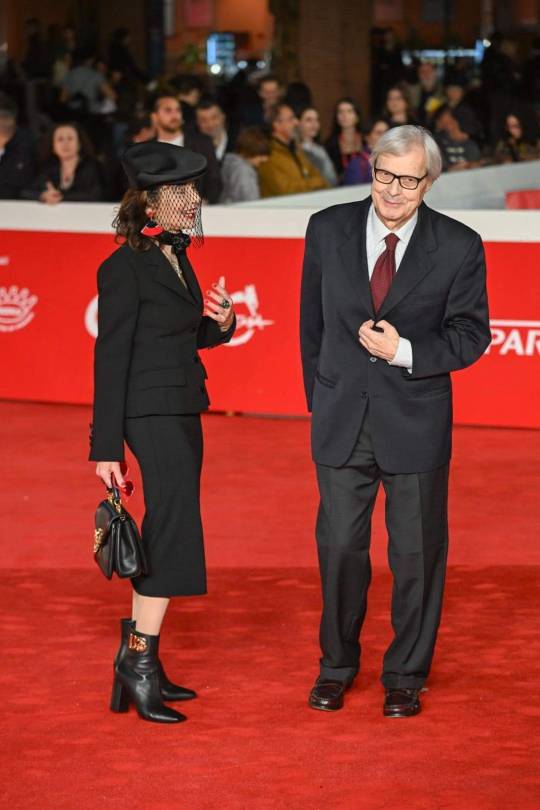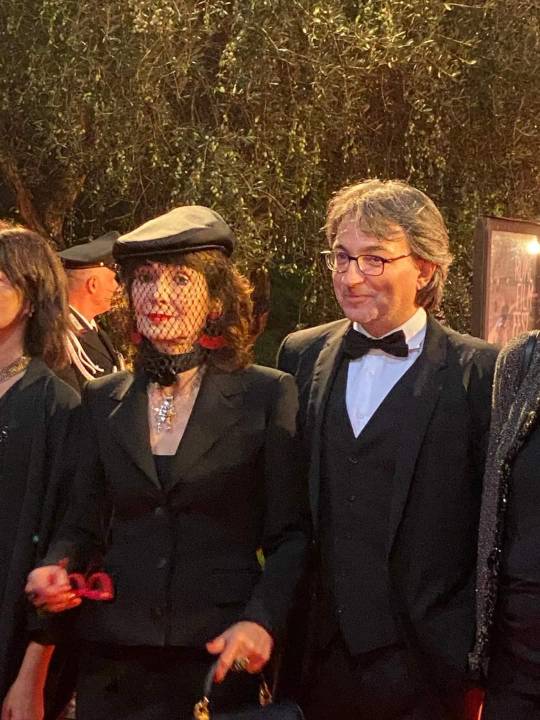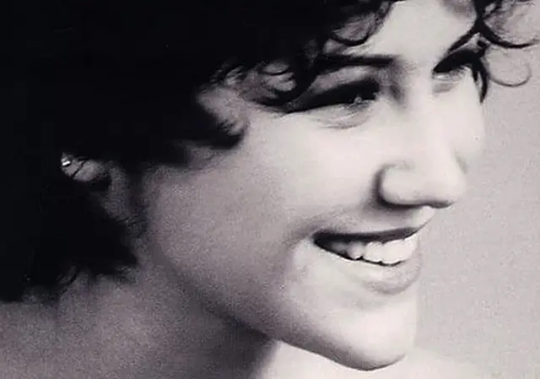#Renato De Simone
Explore tagged Tumblr posts
Text
Simone Sampaio brilha no Sambódromo com a Dragões

View On WordPress
#carnaval 2023#CDLI Carnaval#DRAGÕES DA REAL#escolas de samba#LIGA SP#Renato Cipriano#SAMBÓDROMO#Simone Sampaio
0 notes
Text
A current list of every confirmed LGBTQ+ characters in the Krosmoz.
The characters are placed chronologically by their era NOT by their names ‼️
Genesis Era
Sadida (Asexual) : has applied photosynthesis to produce ten Sadida dolls, his children.
Feca (Bisexual) : became a man so she could procreate with a woman and make Otomaï.
Sacrier (Bisexual) : became a man so she could procreate with a woman and make Lupa.
Great Dragon (Agender) : confirmed by Tot on a tweet he made.
Enutrof (Agender) : he takes the form of a dragon, so he also applies to Tot’s tweet.
Aerafal (Agender) : confirmed by Tot on a tweet he made.
Aguabrial (Agender) : confirmed by Tot on a tweet he made.
Dardondakal (Agender) : confirmed by Tot on a tweet he made.
Grougalorasalar (Agender) : confirmed by Tot on a tweet he made.
Terrakourial (Agender) : confirmed by Tot on a tweet he made.
Ignemikhal (Agender) : confirmed by Tot on a tweet he made.
Shinonome (Agender) : confirmed by Tot on a tweet he made.
Balthazar (Agender) : confirmed by Tot on a tweet he made.
Grougaloragran (Agender) : confirmed by Tot on a tweet he made.
Adamaï (Agender) : confirmed by Tot on a tweet he made.
Efrim (Agender) : confirmed by Tot on a tweet he made.
Phaerys (Agender) : confirmed by Tot on a tweet he made.
Dofus Era
Tylezia (lesbian): the Red Death, mother of Dreggons, daughter of Terrakourial, fell in love with Oyukipoca, the goddess of Bow Meaguars.
Oyukipoca (lesbian): Night-That-Roars, the goddess of Bow Meaguars, had the Vulbis Dofus with Tylezia, which hatched into their son Tyzerion.
Jahash (Bisexual) : confirmed by Tot on a tweet he made.
Julith (Bisexual) : confirmed by Tot on a tweet he made.
Simone (Lesbian) : you can see her dating a female ecaflip by the name of Julie in “The Treasures of Kerubim” Dofus series.
Julie (Lesbian) : she fell in love at first sight with Simone and has been seen dating her in “The Treasures of Kerubim” Dofus series.
Alibert (Gay) : his sexuality has been confirmed in the webtoon Les Tranches de Vie de Wakfu where he had been kissed by a man on the cheek and liked it.
Gustavio (Gay) : he appeared in the webtoon Les Tranches de Vie de Wakfu where he wrapped his arms around Alibert’s neck and kissed his cheek.
Otomaï’s unnamed mother (Bisexual) : she has slept with the goddess feca and had a feeling that the “man” was Feca herself because as soon as she finished praying, the “man” appeared.
Larentia (Bisexual) : she has slept with the goddess sacrier who was disguised as a man and knew about it because she sees “him” bleeding and loving it right after transforming into a beast to leave.
Atone (Non-binary) : just as they died, Oropo told them to rest in peace: “you were a sister, a brother, it didn’t matter.”
Marline (Gay) : had a VERY huge obsession with Khan Karkass, a popular Boufbowler player. has been confirmed by Tot on a tweet that he was a character who specifically confronted Khan’s toxic masculinity.
Wakfu Era
Queen of Bonta Astra (Lesbian) : was seen sitting next to another queen of Bonta.
Astra’s unnamed wife (Lesbian) : was seen sitting next to Astra who was already the queen of Bonta.
Canar (Gay) : his character was based on Albin and Renato from La Cage aux Folles.
Renar (Gay) : his character was based on Albin and Renato from La Cage aux Folles.
#CONFIRMED lgbtq+ characters#NOT HEADCANONS#i’m serious#unfinished list#incomplete#wakfu#ankama#krosmoz#dofus#waven#wakfu lgbtq+#dofus lgbtq+#waven lgbtq+
79 notes
·
View notes
Text
Opera on YouTube 5
Nabucco
Teatro alla Scala, 1987 (Renato Bruson, Ghena Dimitrova; conducted by Riccardo Muti; no subtitles)
Teatro di San Carlo, 1997 (Renato Bruson, Lauren Flanigan; conducted by Paolo Carognani; no subtitles)
Ankara State Opera, 2006 (Eralp Kıyıcı, Nilgün Akkerman; conducted by Sunay Muratov; no subtitles)
St. Margarethen Opera Festival, 2007 (Igor Morosow, Gabriella Morigi; conducted by Ernst Märzendorfer; English subtitles)
Rome Opera, 2011 (Leo Nucci, Csilla Boross; conducted by Riccardo Muti; English and German subtitles)
Teatro Comunale di Bologna, 2013 (Vladimir Stoyanov, Anna Pirozzi; conducted by Michele Mariotti; Italian subtitles)
Rome Opera, 2013 (Luca Salsi, Tatiana Serjan; conducted by Riccardo Muti; no subtitles)
Gran Teatro Nacional, Perú, 2015 (Giuseppe Altomare, Rachele Stanisci; conducted by Fernando Valcárcel; Spanish subtitles)
Metropolitan Opera, 2017 (Plácido Domingo, Liudmyla Monastyrska; conducted by James Levine; Spanish subtitles)
Arena di Verona, 2017 (George Gagnidze, Susanna Branchini; conducted by Daniel Oren; English subtitles)
La Cenerentola (Cinderella)
Jean-Pierre Ponnelle studio film, 1981 (Frederica von Stade, Francisco Araiza, Paolo Montarsolo; conducted by Claudio Abbado; English subtitles)
Glyndebourne Festival Opera, 1983 (Kathleen Kuhlmann, Laurence Dale, Claudio Desderi; conducted by Donato Renzetti; no subtitles)
Salzburg Festival, 1988 (Ann Murray, Francisco Araiza, Walter Berry; conducted by Riccardo Chailly; English subtitles)
Tokyo Bunka Kaikan, 1991 (Lucia Valentini-Terrani, Toshiro Gorobe, Domenico Trimarchi; conducted by Antonello Allemandi; Japanese subtitles) – Act I, Act II
Houston Grand Opera, 1995 (Cecilia Bartoli, Raúl Giménez, Enzo Dara; conducted by Bruno Campanella; no subtitles)
Rossini Opera Festival, 2000 (Sonia Ganassi, Juan Diego Flórez, Bruno Praticó; conducted by Carlo Rizzi; Italian subtitles)
Gran Teatre del Liceu, 2008 (Joyce DiDonato, Juan Diego Flórez, Bruno de Simone; conducted by Patrick Summers; German subtitles)
Romeo Opera, 2015 (Serena Malfi, Juan Francisco Gatell, Alessandro Corbelli; conducted by Alejo Pérez; Italian and English subtitles)
Lille Opera, 2016 (Emily Fons, Taylor Stayton, Renato Girolami; conducted by Yves Parmentier; English subtitles)
Boboli Gardens, Florence, 2020 (Svetlina Stoyanova, Josh Lovell, Daniel Miroslaw; conducted by Sándor Károlyi; no subtitles)
Lucia di Lammermoor
Tokyo Bunka Kaikan, 1967 (Renata Scotto, Carlo Bergonzi; conducted by Bruno Bartoletti; English subtitles)
Mario Lanfranchi film, 1971 (Anna Moffo, Lajos Kosma; conducted by Carlo Felice Cillario; English subtitles)
Bregenz Festival, 1982 (Katia Ricciarelli, José Carreras; conducted by Lamberto Gardelli; no subtitles) – Part I, Part II
Opera Australia, 1986 (Joan Sutherland, Richard Greager; conducted by Richard Bonynge; English subtitles)
Teatro Carlo Felice, 2003 (Stefania Bonfadelli, Marcelo Álvarez; conducted by Patrick Fournillier; Japanese subtitles)
San Francisco Opera, 2009 (Natalie Dessay, Giuseppe Filianoti; conducted by Jean-Yves Ossonce; English subtitles)
Amarillo Opera, 2013 (Hanan Alattar, Eric Barry; conducted by Michael Ching; English subtitles)
Gran Teatre del Liceu, 2015 (Elena Mosuc, Juan Diego Flórez; conducted by Marco Armiliato; French subtitles)
Teatro Real de Madrid, 2018 (Lisette Oropesa, Javier Camerana; conducted by Daniel Oren; English subtitles)
Vienna State Opera, 2022 (Lisette Oropesa, Benjamin Bernheim; conducted by Evelino Pidó; English subtitles)
Il Trovatore
Claudio Fino studio film, 1957 (Mario del Monaco, Leyla Gencer, Fedora Barbieri, Ettore Bastianini; conducted by Fernando Previtali; English subtitles)
Wolfgang Nagel studio film, 1975 (Franco Bonisolli, Raina Kabaivanska, Viorica Cortez, Giorgio Zancanaro; conducted by Bruno Bartoletti; Japanese subtitles)
Vienna State Opera, 1978 (Plácido Domingo, Raina Kabaivanska, Fiorenza Cossotto, Piero Cappuccilli; conducted by Herbert von Karajan; no subtitles)
Opera Australia, 1983 (Kenneth Collins, Joan Sutherland, Lauris Elms, Jonathan Summers; conducted by Richard Bonynge, English subtitles)
Metropolitan Opera, 1988 (Luciano Pavarotti, Eva Marton, Dolora Zajick, Sherrill Milnes; conducted by James Levine; no subtitles)
Bavarian State Opera, 2013 (Jonas Kaufmann, Anja Harteros, Elena Manistinta, Alexey Markov; conducted by Paolo Carignani; English subtitles)
Temporada Lirica a Coruña, 2015 (Gregory Kunde, Angela Meade, Marianne Cornetti, Juan Jesús Rodriguez; conducted by Keri-Lynn Wilson; no subtitles)
Opéra Royal de Wallonie-Liége, 2018 (Fabio Sartori, Yolanda Auyanet, Violeta Urmana, Mario Cassi; conducted by Daniel Oren; French subtitles)
Arena di Verona, 2019 (Yusif Eyvazov, Anna Netrebko, Dolora Zajick, Luca Salsi; conducted by Pier Giorgio Morandi; German subtitles)
Teatro Verdi di Pisa, 2021 (Murat Karahan, Carolina López Moreno, Victória Pitts, Cesar Méndez; conducted by Marco Guidarini; no subtitles)
#opera#youtube#complete performances#nabucco#la cenerentola#lucia di lammermoor#il trovatore#giuseppe verdi#gioachino rossini#gaetano donizetti
30 notes
·
View notes
Text
Cine “Rocco et ses frères”
Título original: Rocco e i suoi fratelli Título en español de España: Rocco y sus hermanos Título en español latinoamericano: Rocco y sus hermanos Calificación por edades: No recomendada para menores de 12 años (equivalente a PG+13) Director: Luchino Visconti Actores principales: Alain Delon como Rocco Parondi Renato Salvatori como Simone Parondi Annie Girardot como Nadia Katina Paxinou…

View On WordPress
#Alain Delon#cine frances#cine italiano#cine italo-frances#crimen#dailyprompt#deporte#Drama#Luchino Visconti
2 notes
·
View notes
Text
Mois du doc à Varces
Dans le cadre du Mois du Film Documentaire, gros coup de cœur en approche à la bibliothèque de Varces : IL BUCO de Michelangelo Frammartino.
1961, c’est l’époque où en Italie et ailleurs, le monde rêve plus grand et plus haut. A Milan, la tour Pirelli est érigée ; Bonatti a gravi le K2 ; Gagarine a fait son petit tour dans des étoiles.
A contresens de cette mégalomanie, dans l’anonymat le plus total, un groupe de jeunes spéléologues explorent dans le massif du Pollino ce qui fut à l’époque la deuxième grotte la plus profonde sur terre : l’Abîme de Bifurto. Un vieux berger semble les observer. Ce qui se joue alors à l’écran croise à la fois la matérialité et le mystérieux.
Le réalisateur italien - coutumier du fait - nous invite à sortir des discours et de l’explicite. Au-delà des genres et des étiquettes, Il Buco est un film qui ne s’appuie ni sur le dialogue, ni sur la musique pour créer de l’intensité. Qu’elles soient la montagne calabraise ou la peau du vieil ermite, la caméra nous offre des topographies tangibles.
A leurs côtés, le gouffre – dans lequel Frammartino et son équipe ont bien dû descendre plusieurs heures – est hors-champ passionnant. Avec Renato Berta à la photographie et à Simone Paolo Olivero au son, toute l’équipe a dû apprivoiser le noir et l’écho.
Chaque plan d’Il Buco devient alors une véritable incantation. Voilà bien l’objet même du cinéma.
François Bégaudeau, à propos d’Il Buco :
« Une fois que tu as passé quatre heures à descendre pour aller faire un plan de cinéma, je vais te dire, ton plan, tu fais gaffe. Je le dis sérieusement : parfois, ce qui manque à certains cinéastes, c’est de solenniser un peu le moment de tourner. »
youtube
Mercredi 27 novembre 2024 à 20h à la bibliothèque de Varces Entrée libre. Réservation conseillée. 04 76 72 84 35 [email protected]
2 notes
·
View notes
Text
O problema das cinebiografias
Por Djenane Arraes

Nesses dias revi o filme Cazuza – O tempo não para (2004), dirigido por Walter Carvalho e Sandra Werneck. Eu conheço razoavelmente a história de Cazuza e do Barão Vermelho. Sinceramente, nunca foi uma das minhas bandas favoritas, apesar de eu reconhecer o valor de excelência de Cazuza teve como compositor. Além disso, conhecer Barão Vermelho, mesmo que minimamente, é obrigação. Mas o que me chamou atenção não foi se a cinebiografia foi bem ou mal contada, ou o fato de que o comportamento dos personagens que poderia ser considerado cool para alguns, para mim não passa de comportamento de moleques riquinhos e imbecis. O que realmente me impressionou foi a falta de capacidade dos roteiristas em produzir um texto em que se tenha um diálogo minimamente orgânico.
A impressão que o roteiro passa é de que Cazuza era o ser iluminado e genial que só falava frases de efeitos o tempo inteiro, enquanto os amigos que o cercavam falavam “é isso aí”. A direção do filme Cazuza não é boa, e a montagem também não é grande coisa. O fato de a direção escolher ora a voz original do canto e ora a voz original do ator nos números musicais foi uma decisão horrorosa. Ou se canta no filme inteiro, ou não se canta nada. Será que não aprenderam nada com as boas cinebiografias e filmes musicais que estão aí a disposição. Mas o que incomodou de verdade é a falta de capacidade de se contar uma história sólida de um personagem muito importante da música brasileira.
Isso me fez lembrar de outras cinebiografias com o mesmo problema: de Simonal, de Erasmo Carlos, de Elis Regina, de Renato Russo, de Tim Maia... umas cinebiografias são melhores que outras, mas o que elas possuem de defeito em comum é a pobreza no desenvolvimento no roteiro, que coloca o personagem como um ungido que só fala frases de feito enquanto os acontecimentos vão sendo jogados na tela. A organicidade necessária para a construção do storytelling nesses filmes é completamente ignorada, a ponto de eu pensar que a propaganda deep fake gerado por I.A da Elis Regina feita pela Volkswagen é muito superior nesse sentido. Por isso fiquei a pensar: será que os cursos de cinema estão precisando focar mais nas aulinhas de redação, ou será os cineastas também são reflexo desse mesmo mundo de frases de efeitos que é mostrado na tela?
Por incrível que pareça, a melhor cinebiografia de músicos nacionais são Dois Filhos de Francisco (2005) e Gonzaga, de Pai para Filho (2012). Em comum esses dois filmes tem a direção de Breno Silveira, que começou a carreira cinematográfica como diretor de fotografia e, depois, dirigindo videoclipes. Uma pena que ele não fará mais filmes, pois foi embora cedo demais. Pelo menos Silveira deixou a referência nacional de um bom Storytelling. Eu gostaria de ver cinebiografias de músicos e bandas nacionais que saibam contar bem uma história, não precisa ser toda ela, que possa mostrar que essas pessoas foram gente normal, e não ungidos incompreendidos. Acredito que a memória da cultura brasileira seria melhor cultivada dessa maneira.
3 notes
·
View notes
Text
If TWST dubbed in Italian, the doppiatori (VAs)
[THIS IS ONLY WHAT IF]
OCTAVINELLE:
Azul A.: Ruggero Andreozzi
Jade L.: Paolo Sesana
Floyd L.: Simone D'Andrea
FRESHMEN:
Ace T.: Davide Garbolino
Deuce S.: Flavio Aquilone
Jack H.: Maurizio Merluzzo
Epel F.: Renato Novara
Sebek Z.: Matteo de Mojana
(I'll add more later if possible, don't take this seriously! This is just a random thought!)
3 notes
·
View notes
Text
Elisabetta Sgarbi parla dell' Anteprima ieri del suo film in concorso alla Festa del Cinema di Roma, "L’isola degli idealisti", scritto con Eugenio Lio, dal romanzo di Giorgio Scerbanenco pubblicato da La nave di Teseo.
"Una grande emozione vederlo in una sala così piena insieme agli attori, al produttore Angelo Barbagallo, Rai Cinema, la Film Commission dell’Emilia Romagna, il distributore Fandango e le tante persone che hanno lavorato al film.
Con Tommaso Ragno, Elena Radonicich, Renato De Simone, Michela Cescon, Renato Carpentieri, Tony Laudadio, Mimmo Borrelli, Vincenzo Nemolato, Chiara Caselli, Antonio Rezza, Rossella De Martino, Hildegard De Stefano".








0 notes
Text
Revista Mapas do Confinamento , a publicação do coletivo que representa uma série de talentos (onde estou incluído).
Faça o download gratuito no link no final do post
***
REVISTA MAPAS DO CONFINAMENTO
19 edições com colaborações de:
Ana Carvalho | Lelena Lucas | Teresa dos Santos | Paulo Kellerman | Ondjaki | Susana Piedade | Hirondina Joshua | Richard Zimler | Rafael Ibarra | Telma Tvon | Kátia Borges | Carla de Sousa | Ricardo Fonseca Mota | José Luís Jorge | Maria Teresa Horta | Maria João Cantinho | Heduardo Kiesse | Godofredo de Oliveira Neto | Ana Gilbert | José Luís Mendonça | Frankie Boy | Décio Zylbersztajn | Pedro Teixeira Neves | Deusa d'África | André Timm | Mélio Tinga | Eduardo Duarte | Ana Cristina Silva | Natália Timerman | Elísio Miambo | Goretti Pereira | Adriane Garcia | Hugo Mezena | Marcela Dantés | Zetho Cunha Gonçalves | Mónia Camacho | Sónia Silva | Ronaldo Cagiano | Rafael Vieira | José Alberto Postiga | Sónia Travassos | Alê Motta | João Nuno Azambuja | Alice WR | Amílcar Bettega | Emílio Tavares Lima | Domingos Lobo | Dirce Waltrick do Amarante | Renata Belmonte | Manuela Vaz | Julieta Massossote | Teresa Guerreiro | Sérgio Tavares | Tiago D. Oliveira | Almeida Cumbane | Ana Pessoa | Sara Bandarra | Claudia Nina | Henrique Rodrigues | Otildo Justino Guido | Harrie Lemmens | Olinda Gil | Patrícia Lavelle | Susana Gonçalves | Rafael Azevedo | Agnaldo Bata | Rui Zink | Katia Gerlach | Vanessa Vascouto | Teresa Afonso | João da Silva | Sébastien Rozeaux | Céline Gaille | Luísa Semedo | Mazé Torquato Chotil | Helena Machado | Sónia Queimado Lima | Luísa Ducla Soares | Aida Gomes | Eltânia André | Ana Moderno | Lahissane | Daísa Rizzotto Rossetto | Renato Tardivo | Ricardo Figueira | Marta Barbosa Stephens | Cristina Vicente | Ozias Filho | Nara Vidal | João Anzanello Carrascoza | Edmilson Mavie | Juliana Berlim | Gabriela Ruivo Trindade | Juliana Monteiro Carrascoza | Cristina Drios | Alex Andrade | Sónia Palma | António Ladeira | Sílvia Bernardino | Nuno Gomes Garcia | Simone Mota | Nuno Camarneiro | Lopito Feijóo | Thais Beltrame | Paulo Martins | Dominique Stoenesco | Luciana Grether | Catarina Gomes | Rita Reis | Sara Bandarra | Sónia Borges | Maraia | Inês Soares | Fátima Nascimento | Yara Kono | Ana Biscaia | Thais Beltrame | Luísa Portugal | Mafalda Milhões | Marta Madureira | Rachel Caiano | João Batista Melo | Helena Terra | Catarina Gomes | Mónica Brandão | Gabriela Silva | Rodrigo Tavares | Amosse Mucavele | Valério Maúnde | Carla Bessa | Sara F. Costa | Paulo Landeck | Samuel F. Pimenta | Paulo José Costa | Mário Araújo | Dora Nunes Gago | Rita Taborda Duarte | Kalaf Epalanga | Phoe McCallum
Download gratuito:
https://www.mapasdoconfinamento.com/magazine-portuguese
#oziasfilho#oziasfilhophotographer#cascais#portugal#fotografia#bnw#poesia#photography#retratos#cinema
0 notes
Video
youtube
Apresentação Renato e Simone na noite do tango. 08/06/2024 às 19h no Saguão do Teatro Municipal de Santo André. (11) 99357-5691 Studio de Dança Renato Mota - Escola de Dança.#tango #tangoemsantoandre #tangoabc #showdetango #auladetango #apresentaçãodetango
0 notes
Text
Lecture Notes MON 4th MARCH
Masterlist
BUY ME A COFFEE
Avant-Garde and Everyday Life 1880-1940
Further Reading: Siegfried Kracauer (1889 - 1966) from 'The Mass Ornament'
George Grosz (1893 - 1959) and Weiland Herzfeld (1896 - 1988) 'Art is in Danger'
Sergei Tretyakov (1892 - 1939) 'We Are Searching' and 'We Raise the Alarm'
Andre Breton (1896 - 1957) and Leon Trotsky (1879 - 1940) 'Towards a Free Revolutionary Art'
More and Other
Depending upon the author or artist, they have different or their own personal definition of the world.
Avante-Garde (has military origins): those who open the way for others to follow.
The first thinker of this movement, in relation to art was a Soviet: Claude Henri de Rouvroy, Comte de Saint-Simon (1760-1825)
“We artists will serve you as an avant-garde, the power of the arts is most immediate: when we want to spread new ideas, we inscribe them on marble or canvas. What a magnificent destiny for the arts is that of exercising a positive power over society, a true priestly function and of marching in the vanguard of all the intellectual faculties!”
Peter Bürger, Theory of the Avant-garde. English edition 1974
Published a book: The Historical Avant-Garde: Dada, Constructivism and Surrealism. Against the ‘institution of art’. The avant-garde attempts to ‘sublate’ art into life; a poeticisation of everyday life
“Given the avant-gardist intention to do away with art as a sphere that is separate from the praxis of life, it is logical to do away with eliminate the antithesis between producer and recipient. It is no accident that both Tzara’s instructions for the making of a dada poem and Breton’s for the writing of automatic texts have the character of recipes... this represents a polemical attack on the individual creativity of the artist…"
- Peter Bürger Theory of the Avant-Garde p53
Futurism is included in historical Avante-Garde, but it mainly focuses on Dada, Constructivism, and Surrealism. (Futurism was mostly dropped and stopped in its development due to Fascist links).
Examples:


(Left) Raoul Hausmann, ABCD (self portrait), 1924 (Right) Luibov Popova, Costume Design for 'The Magnanimous Cuckold’
Founded by the poet Filippo Tommaso Marinetti in 1909, Futurism included the painters. Umberto Boccioni, Gino Severini, Giacomo Balla and others. The movement became very right-wing with Marinetti supporting Fascism and war.

Giacomo Balla, Abstract Speed + Sound, 1913–1914
Poggioli left Italy to teach in the USA 1938. Stayed in the USA and set up a magazine: Renato Poggioli, Theory of the Avant-Garde, in Italian 1949-52. English trans. 1968. Activism; Antagonism; Agonism; Nihilism. Positive and Negative Avant-Garde.
Bürger entered dialogues with Poggioli: only these artistic movements that go against the artistic instructions, art and life. Free with the definition – anything that wasn’t cannon. And Poggioli created 4 categories for avant-garde. (4 movements): Activism (a way to action), Antagonism (combativeness, struggle against something and un-interoperative quest to sacrifice itself for progress – Nihilistic – into nothing but itself), Agonism (feeds into un-interpretive) and
Dada. A negative avant-garde, according to Poggioli
Soon develops six major bases: Zurich, New York, Paris, Berlin, Cologne, Hanover.
Dada has several distinct phases:
Zurich (Cabaret Voltaire) 1916-17
Berlin (photomontage, explicit engagement with politics) Der dada 1919
Paris (Tzara, Francis Picabia, Marcel Duchamp; young surrealists Breton and Paul Eluard, Max Ernst) 1921-22
New York Dada (playful/philosophical – Duchamp, Picabia, Stieglitz).
There is also Dada-Tank based in Zagreb (1922) and also
relationship with Bleu Reiter and Russian constructivism via Kurt Schwitter’s Merz (a magazine and an artwork) 1923
The term – Dadaists were not averse to self-mythologizing and the ‘origins’ of the name are many and contradictory – Ball makes a claim for the multiple meanings of the word: ‘In Romanian Dada means yes yes, in French a hobby horse. To Germans it is an indication of idiotic naivety and of a preoccupation with procreation and the baby carriage’
Hulsenbeck claims that the word was chosen at random ‘by slipping a knife edge into the pages of a dictionary’.
Either way, word alone demonstrates important aspects of the movement:
Internationalism/babel-like
Non-sense (or meaning ‘between’ languages’ multiple/opposite meanings produced ‘dialectically’ across languages (like a collage))
Chance – the removal of artistic ‘decision’ (the removal of the artist himself)
Name is a sort of ‘empty signifier’ in which any meaning may become attached.
Zurich Dada, 1915-20: the earliest Dada inventing the Cabaret Voltaire
1915 Germans Hugo Ball, Emmy Hennings, Richard Hulsenbeck and Hans Arp, Tristan Tzara and Marcel Janco from Rumania. A year later Sophie Taeuber, Hans Richter, Christian Schad and Walter Serner joined the group.

There was a deep correlation between written text and art, especially with artists at the time writing many manifestos. Tzara was one of these people who published manifestos.
'Let each man proclaim: there is a great negative work of destruction to be accomplished. We must sweep and clean. Affirm the cleanliness of the individual after the state of madness, aggressive complete madness of a world abandoned into the hands of bandits, who rend one another and destroy the centuries. ‘(Tristan Tzara, 1918)

Tristan Tzara, Dada 3. July 1918. Periodical.
(Destroy everything to build something new. Everything has led to war.)
TO MAKE A DADAIST POEM
Take a newspaper.
Take some scissors.
Choose from this paper an article of
the length you want to make your poem.
Cut out the article.
Next carefully cut out each of the words
that makes up this article and put them
all in a bag.
Shake gently.
Next take out each cutting one after the other.
Copy conscientiously in the order in which they left the bag.
The poem will resemble you.
And there you are—an infinitely original author of charming sensibility, even though unappreciated by the vulgar herd.
—Tristan Tzara, 1920
youtube
Kurt Schwitters, Ursonate
Some aspects of dada
Digressive/multiple - No ‘one’ style
Irreverent/Mocking: ‘what we are dealing with is at once a buffoonery and a requiem mass’ (Hugo Ball), Ridicule and grotesque.
Undoes categories of art making (genius, creative choice) in favour of accident, collaboration – against principles per se: ‘Introduce symmetries and rhythms instead of principles. Contradict the existing world orders . . .’ (Ball)
An art against art itself
Dada is a ‘spirit’, not a ‘group’ and that spirit is ‘contemptuous meaninglessness’.
Artistically it is a response to two movements:
Futurism (which nevertheless provides the model of how an avant-garde may be actively promoted via journals, international contacts)
Expressionism – which attempts to reflect the horror of the world in painting, poetry, and theatre – motif of expressionism is the scream (contrast with the dada laugh).
Linked to trauma of the war “the shocks of the trenches are simulated by the shocks of the metropolis”.
The Cabaret aimed for art brutal, spoken work poetry and being proactive and even simultaneous poetry. Focusing on construction and de-construction, towards nonsensicality. Aiming to communicate that artists are not geniuses’, and anyone can create, which makes them an artist. This all was done to destabilise notions of ‘high art’ and ‘low art’. Specifically, the art market. It wasn’t just about describing but showing it in the typography with tilted overlapping nonsensical writings.
German Dada: positioned itself against Expressionism as it became popular in Germany. While Swiss people were having a holiday, in Germany people needed food stamps to eat’.
Paris 1919-1922
Since 1917 Tristan Tzara had contact with writers in Paris. In January 1920 Tzara moved to Paris and met Picabia and Breton, publisher of the magazine 'Littérature', there. In the same year Hans Arp and in 1921 Max Ernst from Köln as well as Man Ray from New York arrived. Paris became the last important dada-centre. Other members of Paris-Dada were Marcel Duchamp, Jean Croti, Suzanne Duchamp, Jaques Rigaut, Paul Eluard, Georges Ribemont-Dessaignes, Benjamin Péret and Théodore Fraenkel.
Paris: 391 was a magazine that collaborated with Picabia which helped art to circulated and make artists money.

Francis Picabia, Girl Born Without a Mother, 1916-18
Berlin - Club Dada : 1918 – 1923
First International Dada Fair held at the Otto Burchard Gallery, Berlin, June 30, 1920.
In 1917 Richard Hulsenbeck moved from Zürich to Berlin and met there Franz Jung, Wieland Herzfelde and his brother John Heartfield (Originally Johannas Hertzfeld, but he Anglicised his name in opposition to his country with the war). Additional 'Club Dada' members were Johannes Baader, George Grosz, Hannah Höch, Walter Mehring and Raoul Hausmann.
First International Dada Fair [Messe]: July 5, 1920, Berlin


(Left) Raoul Hausmann, Tatlin at Home, 1920 (Tatlin was a Prussian artist: Constructionist) (Right) Banner reads ‘Art is Dead: Long live the new machine art of Tatlin’

German (Spartakus) Revolution, 1918-19. Karl Leibknecht proclaims the Republic; Rosa Luxemburg addressing a crowd.
The Freikorps (was a right-wing militia, pre - Nazi) restore order, brutally murdering Luxemburg, and Liebknecht. The German Dada of the 20’s was far more political, and Zurich Dada was more psychological.

Hannah Höch. (The Mistress of Hertzfeld, one of two women allowed in the club).

Cut with the Kitchen Knife through the Last Weimar Beer-Belly Cultural Epoch in Germany
Hoch featured dancers in her work, to symbolise feminine freedom. Lenin and Marx are featured. Kitchen Knife potentially links to women’s role in the kitchen, but it’s quite a violent item to choose from there, potentially relating to an anger, aggression, and violence. She specialised in collage albums, taking cutouts from the newspapers.
(Schnitt mit dem Küchenmesser durch die letzte Weimarer Bierbauchkulturepoche Deutschlands). 1919-1920
“Dada montage made no ‘image of the people’ as a counter-image to its satire of contemporary politicians – the ‘people’ are merely glimpsed in miniature pictures of counter-revolutionary demonstrations and in a photograph of far-away Spartacists spread like ink blots beneath unlit streetlamps” (Brigid Docherty)
Otto Dix and Grosz were both persecuted by Nazi’s (both of these artists were also in the trenches).
Grosz: the political act and the artistic act:
Dada, particularly its German wing, insisted in the role of the tendentious or openly political art and artists in the political arena, particularly in light of what they saw as the failure of previous avant-gardes to address political reality. Grosz in Art is in Danger (1925):
“I was interested in tendentious painters, the moralists: Hogarth, Goya, Daumier
I drew and painted out of opposition and attempted in my work to present the world in all its all its ugliness, sickness, and untruthfulness.
The German Dada movement was rooted in the realization... That it was complete insanity to believe that ‘spirit’ or people of ‘spirit’ ruled the world [it was against] the head-in-the-cloud tendency of so-called Holy Art [e.g. Kokoschka, expressionism, abstraction] whose disciples brooded over cubes and gothic art whilst the generals were painting in blood”.

Otto Dix, War Cripples: Fit for Service, 1920. Probably destroyed by the Nazis
Medicine and tech at the time had advanced enough to save but not heal the people from the war effort.
An aesthetics of contradiction. Heartfield called his work: ‘contemporary historical montages’. John Heartfield, ‘The Meaning of the Hitler Salute’, A-I-Z, 1932. A.I.Z: Illustrated Magazine of the Workers.

Photomontage/assemblage/readymade
dadaists associated their production of pictures with the operations of the modernism itself, particularly the production line. And so, montage, and assemblage or even the ready-made, are in one sense techniques for assembling or mounting machine-made elements, reusing them of finding a new purpose and thought for them.
Relates to German industrial modernisation in the 1920s, but the dadaists remain ambivalent – sometimes critical, sometime praising - about industrialisation, but always emphasising the determinative significance of technologies of production and reproduction. Grosz, for example, kept an autographed picture of Henry Ford on his studio wall, and Hannah Hoch later claimed, “whole purpose of Berlin dada was to integrate objects from the world of machines and industry into the world of art”.
Importantly, the ‘dehumanising’ quality of modernity becomes the ‘matter of fact’ or ‘objective’ – ultimately being rebranded as the Neue Sachlichkeit (new objectivity or new sobriety) with art.

Georg Scholz Industriebauern. [Industrial Farmers] 1920. Detail of photomontage
Constructivism. A positive avant-garde (linked to mechanics and industrialisation aka dehumanisation).
Vladimir Tatlin (1885-1953):

1913 Tatlin visited Picasso in Paris and almost certainly saw his work in work. Because Russia was cut off from the West during WWI, Tatlin’s work developed in a unique direction exploring modern materials. He claimed the Russian revolution continued what the artists had already begun. The Russian Revolution in 1918, 4 years of civil war, cut off from the rest of the world. Constructionist artists supported the revolution. In 1924 Stalin assumes power and brings about great changes.
El Lissitsky made posters to publicise as much and as far as possible to push for a revolution.


(Left) El Lissitsky, Beat the Whites with the Red Wedge, 1919 (Right) El Lissitsky, Propaganda Board
Constructivism (officially from 1921 with OBMOKu exhibition Moscow)
Construction v. Composition Debate at INKhUK
INKhUK (Institute of Artistic Culture), 1920-24. The centre of many Constructivist debates. The First Working Group of Constructivists was formed there involving: Ioganson, Rodchenko, Popova: G Stenberg and C Medunetsky
Productivism. Art into Production, Boris Arvatov, 1925: Theorists: Osip Brik; Alexei Gan: Boris Arvatov: Nikolai Tarabukin: Sergei Tretyakov; Nikolai Chuzhak; Viktor Shklovsky.
Film makers: Dziga Vertov; Sergei Eisenstein; Vesevolod Pudovkin.
Poet, etc. Vladimir Mayakovsky
Theatre: Vesevolod Meyerhold
Artists: Vladimir Tatlin; Alexsandr Rodchenko; Varvara Stepanova; Luibov Popova; Karl Iogason; Gustav Klucis; Alexandra Exter; Stenberg Brothers (Georgii and Vadimir). Naum Gabo and Antoine Pevsner.
Theoretical Jounal: LEF (Left Front of the Arts) 1923-25, edited by Mayakovsky and Brik; and Novy LEF (New LEF), 1927-29, edited by Mayakovsky and Sergei Tretyakov
In 1921 Moscow held an exhibit that begins the Constructivism vs Composition. INKhUK called this the “Laboratory period”, sophisticated in an architectural way. While Composition was intuitive, Construction was intentional. Humans are just producers and vessels. All of this work was a criticism of the production line but not necessarily suggesting it was bad. The Constructivists contrasted ‘construction’ with traditional ‘composition’.

The second Obmokhu exhibit in May 1921

Luibov Popova, Space-Force Construction, 1921
INKhUK (Institute of Artistic Culture, Moscow) Programme of 1921: ‘death to art’ – in favour of ‘intellectual production’ or a ‘new synthesis of art and industry’ on a par with ‘scientific communism’.
Three principles:
1. tektonika – techtonics or the functionality, social and political use of industrial material;
2. Konstruktsiya – construction, the organisation of the material;
3. Faktura –the conscious handling and manipulation of chosen material.

Alexsandr Rodchenko, Oval Hanging. Construction c.1920


Photograph of Aleksandr Rodchenko wearing "production suit" of his own design, with Spatial Constructions in background, 1922
Productivism: art into production
At the end of his life, Tatlin was working on a utopian organic flying machine, which he called: ‘Letatlin’.

Teapots in the service of the revolution: Seutin and Melevich.
A large number of artists didn’t have the means and industry to produce what they wanted to, so some designers in later years took their sketches and drawings and made them, or miniature versions.
A lot of this design focused on workwear and making practical clothing. These designs focused more in Russia, and while on the other side (America/Western Europe) you had Boa House design and fashion: Fabric and clothing designs by Lyubov Popova, 1920s

Letting people decode art – to create new meaning and perspectives, art, the eye, montage, perspective. This was a breakthrough for film, photography and art alike. And sparked from the ideas of propaganda art, regime and art against it like dada, and art being an accessibility to all – therefore not relying on old texts and letting people feel and decode it for themselves.
Dziga Vertov, Man With a Movie Camera, 1929:

Sergei Eisentstein, October: Ten Days that Shook the World, 1927:
youtube
Sergei Eisenstein, Battleship Potemkin, 1925:
youtube
#Youtube#art#art gallery#artwork#writing#art tag#essay#paintings#art exhibition#art show#art history#essay writing#artists#writers#history#writeblr#writers and poets#writers on tumblr#drawings#creative writing#film#historical#lecture#academic writing#dark academia#architecture#film photography#avant garde#russia#history lesson
1 note
·
View note
Text



#ElEscenarioDelMundo
🎭 Teatro Familiar: “ROBIN HOOD, EL HÉROE DE SHERWOOD”👨💘🏹🌳
✍️ Dramaturgia: Vivi Neves
💥 Robin vuelve a Sherwood para poner orden a los abusos del Alcalde Gisborne y reconquistar a Marianne, su amor de juventud. El triunfo de Robin es la última esperanza del sufrido pueblo. ¿Podrá salvarlo?

👥 Elenco: Renato Medina, Susan León, Diego Alonso Pérez, Pau Simons, Fernando Pasco, Renato Pantigozo, Jade Durán, Roberto Nuñez, Damaris Zapata, Eduardo Albarracín y Francisco Agip
Musicalización: César Gálvez
📢 Dirección: Manuel Alegría y Renato Pantigozo

🔎 Producción Ejecutiva: Ysabel Cáceda y Renato Pantigozo
📝 Asistencia en Producción: Xiomara Mía y Damaris Zapata
💃Coreografía de Batallas: Edson Dávila
🖼 Diseños: Mayra Shols
🙏 Agradecimiento: Municipalidad de San Borja
© Producción: Sorpréndete Producciones, Panda Teatro Impro y Municipalidad Metropolitana de Lima.

📌 TEMPORADA: Del 20 de abril al 26 de Mayo
📆 Funciones: Sábados y Domingos
🕟 4:30pm.
🏪 Sala Alzedo del Teatro Manuel A. Segura (jr. Huancavelica 251 - Centro de Lima)

🎟️ Entrada Platea: S/.40
🎫 Entrada Mezzanine: S/.30
🖱 Reservas: https://www.joinnus.com/events/theater/lima-robin-hood-el-heroe-de-sherwood-61107
0 notes
Text
Giornata della memoria, a Milano 14 nuove pietre d’inciampo

Giornata della memoria, a Milano 14 nuove pietre d’inciampo. A Milano sono state posate 14 nuove pietre d'inciampo, nell'ambito delle celebrazioni della Giornata della Memoria. La posa �� avvenuta questa mattina, alla presenza della Presidente del Consiglio comunale, Elena Buscemi, e dei presidenti di municipio Mattia Abdu (Municipio 1), Simone Locatelli (Municipio 2) e Caterina Antola (Municipio 3). «Posare una Pietra d'inciampo significa far tornare a casa idealmente una persona deportata nei campi di sterminio dall'abominio nazifascista - ha detto la Presidente del Consiglio comunale, Elena Buscemi -. Per il Comune di Milano è molto importante riportare all'attenzione della città la memoria di queste persone e le loro storie familiari. Queste Pietre sono un antidoto contro l’indifferenza». Altre 13 Pietre d'Inciampo verranno posate il 7 marzo. Di seguito i nomi degli iscritti e le vie interessate: Weissenstein De Francesco Margaret, via Renato Fucini 5; Morandi Anacleto, via Eugenio Carpi 3; Foà Bianca, via Pompeo Cambiasi 3; Cajelli Giuseppe, via Bernardino de' Conti 6; Giuliani Mario, via Giovanni Terruggia 6; Valagussa Angelo, viale Affori 20; Bosè Egidio, via Cesare Brivio 7; Agresti Elio, via Amilcare Bonomi 2; Arabo Eugenio, via privata Leonardo Bruni 13; Merlini Giuseppe, via Don Giovanni Verità 7; Dana Sara, via Giovanni Battista Casella 41; Behar Lea, via Giovanni Battista Casella 41; Thomas Carlotta, via Emanuele Odazio 6.... #notizie #news #breakingnews #cronaca #politica #eventi #sport #moda Read the full article
0 notes
Text
La mattina del 16 ottobre 2023, in una Casa del Cinema affollata di studenti e cittadini comuni, è stato presentato il mini documentario prodotto da "Il Civico Giusto," che narra la straordinaria storia di Elena Fabrizi, meglio conosciuta come Sora Lella. Durante i mesi dell'occupazione nazifascista, Sora Lella si distinse per il suo coraggio nell'aiutare numerosi ebrei romani a nascondersi e a sopravvivere in un momento buio della storia della capitale italiana. In quei giorni in cui la furia nazista imperversava per le strade di Roma, Sora Lella, come molti altri cittadini romani, decise di non girarsi dall'altra parte e di mettere in pericolo la propria vita per proteggere coloro che erano perseguitati. Il racconto di questa straordinaria vicenda è stato affidato ai nipoti di Sora Lella, ovvero Simone, Renato, Mauro ed Elena. Il documentario si avvale anche di preziose immagini d'archivio provenienti da istituzioni quali l'Istituto Luce, Rai Teche, Archivio Capitolino e Archivio Riccardi, che sono partner di questo emozionante progetto. La voce narrante del documentario è quella di Paola Tiziana Cruciani, mentre la sceneggiatura e i testi sono stati curati da Maria Grazia Lancellotti. La sigla finale è stata composta da Luca Barbarossa, con il montaggio a opera di Mirko Bertarelli. Questo progetto rappresenta un notevole sforzo collaborativo, coinvolgendo anche gli studenti, mettendo al centro il tema della scelta. Paolo Masini, ideatore e coordinatore del progetto, sottolinea: "In qualsiasi momento, anche nei più drammatici, si può scegliere da che parte stare quando viene calpestata la dignità umana." Maria Grazia Lancellotti, referente ricerca storica e coordinatrice della rete nazionale di scuole "Memorie. Una città, mille storie," ha aggiunto il suo sostegno al progetto. I nipoti di Sora Lella condividono il racconto della loro nonna come un esempio emblematico di solidarietà tra i romani in tempi difficili. Mauro Trabalza ha dichiarato: "La storia di nostra nonna è una storia emblematica del cuore di tanti romani che hanno voluto aiutare gente in difficoltà, la stessa gente con la quale viveva tutti i giorni a Campo de' Fiori e che all'improvviso e senza motivo veniva braccata. Una Roma solidale che manca a tutti noi." Tra i presenti, insieme agli studenti dei licei Vittoria Colonna e Orazio che partecipano al progetto, c'era anche Enrico Bufalini, Direttore dell'Archivio dell'Istituto Luce, che ha elogiato il progetto per essere in linea con la visione dell'istituto e ha promesso di continuare a sostenere iniziative simili. Anche Francesca Cadin di Rai Teche, un altro prezioso partner del progetto, ha lodato il contributo alla storia televisiva e culinaria del paese offerto da Sora Lella e si è impegnata a sostenere ulteriori progetti futuri. Rosarita Di Gregorio dell'Archivio Storico Capitolino ha sottolineato l'importanza di storie come quella di Sora Lella nel rendere omaggio al lato buono dell'umanità, anche nei momenti più drammatici. Per conservare questa memoria storica, l'edificio in cui è stata presentata la storia di Sora Lella sarà dotato di un QR code inciso su una mattonella, che racconterà la storia di quei giorni e della straordinaria donna. Nel frattempo, il mini-documentario può essere visualizzato sul sito www.ilcivicogiusto.it. La mattonella de Il Civico Giusto, realizzata da Dante Mortet, sarà presto collocata all'esterno del ristorante in Via di Ponte Quattro Capi 16, sull'Isola Tiberina. Il prossimo evento de Il Civico Giusto in occasione dell'80° anniversario del rastrellamento è previsto per il 20 ottobre, dedicato a Michele Bolgia, ai ferrovieri e ai finanzieri della Stazione Tiburtina. Un secondo evento è programmato per il 30 ottobre, in onore del partigiano Giuseppe Venturini, presso la biblioteca del Quarticciolo. Il Civico Giusto è realizzato in collaborazione con diverse istituzioni, tra cui l'Archivio di Stato di Roma, l'Istituto Centrale per i Beni Sonori
e Audiovisivi, l'Istituto Luce, il Circolo Gianni Bosio, l'Archivio Capitolino, Rai Teche, la Camera di Commercio di Roma, il Dipartimento Studi Umanistici di Roma Tre, l'Archivio Centrale dello Stato, l'Archivio Riccardi, la Roma Lazio Film Commission e la Mano Artigiana di Dante Mortet, responsabile della realizzazione della mattonella artistica. Il Comitato scientifico è presieduto da Michele Di Sivo, Direttore dell'Archivio di Stato di Roma.
0 notes
Text
Há 20 anos, Maria Rita irrompia como furacão na música brasileira com antológico primeiro álbum
Por Mauro Ferreira Jornalista carioca que escreve sobre música desde 1987, com passagens em 'O Globo' e 'Bizz'. Faz um guia para todas as tribos 09/09/2023 10h28

Lançado em 9 de setembro de 2003, o disco firmou Marcelo Camelo como compositor na MPB e revelou uma cantora que já nasceu grande.
♪ MEMÓRIA – Nascida em 9 de setembro de 1977, Maria Rita Camargo Mariano faz hoje 46 anos. Há exatos 20 anos, a cantora paulistana festejava o 26º aniversário com a edição do primeiro álbum, Maria Rita. Lançado com toda pompa pela gravadora Warner Music em 9 de setembro de 2003, o disco fez com que Maria Rita irrompesse na música brasileira com força de um furacão.
É fato que a cantora já tinha entrado em cena em 2002 com aparições em discos de Chico Pinheiro (Meia noite, meio dia) –guitarrista com quem Maria fizera os primeiros shows – e do padrinho artístico Milton Nascimento (o revigorante álbum Pietá).
Contudo, apesar de ter sido premiada como a “revelação musical” de 2002, foi somente com a edição de Maria Rita, álbum gravado com produção musical de Tom Capone (1966 – 2004), que o chamado grande público tomou conhecimento e consciência da existência de cantora igualmente grande que pareceu já ter nascido pronta.
Cantora que era filha da maior, Elis Regina (1945 – 1982), o que deixou a sensação de que, em requintada trama do destino, a vida amenizava um pouco a saudade que o Brasil sentia de Elis ao apresentar Maria Rita. Até porque, sem jamais ter soado como genoma nesse momento inicial, mas tampouco sem conseguir ofuscar o imperativo do D.N.A., Maria Rita ecoou Elis no primeiro álbum.
Sem falar que, em outro lance inusitado do destino, dois compositores apresentados no último álbum de Elis – Jean Garfunkel e Paulo Garfunkel – reapareceram no primeiro disco de Maria Rita como autores do jazzy blues Não vale a pena.
Outro detalhe curioso: uma das duas músicas alocadas como “faixas interativas” – termo atualmente risível, mas moderníssimo naqueles tempos em que a internet ainda tinha alcance limitado – era Vero, parceria de Murilo Antunes com Natan Marques, músico e compositor também presente no derradeiro LP de Elis.
Ao mesmo tempo em que se conectou intuitivamente com a mãe, Maria Rita começou a procurar a própria turma. Foi na voz dela que Marcelo Camelo se afirmou como compositor além do grupo Los Hermanos.
Recorrente no repertório do álbum Maria Rita como compositor de três das 15 músicas, Camelo forneceu as inéditas Santa chuva (balada densa e dramática) e Cara valente (samba leve, até hoje presente nos roteiros dos shows da cantora) e teve a canção Veja bem, meu bem (2001) regravada por Maria Rita dois anos após o registro fonográfico original da banda Los Hermanos em ação que popularizou a música entre o público da MPB.
Equilibrando o peso e a honra de ser filha de Elis, Maria Rita se impôs instantaneamente em cena com álbum coeso em que amaciou o peso roqueiro de Agora só falta você (Luiz Carlini e Rita Lee, 1995) – sucesso da fase Tutti Frutti da discografia de Rita Lee (1947 – 2023), de quem a cantora também regravou Pagu (2000), parceria de Rita com Zélia Duncan – e acentuou a sofrência sensual do bolero cubano Dos gardenias (Isolina Carrillo, 1947), cantado no original em espanhol.
Do México, veio como inspiração La bamba, tema folclórico que serviu de base para Milton Nascimento harmonizar A festa, música inédita dada pelo compositor a Maria Rita.
Entre regravações de Menina da lua (Renato Motha, 1992), de Menininha do portão (Paulinho Tapajós e Nonato Buzar, 1969) e da então recente Lavadeira do rio (Lenine e Bráulio Tavares, 2002), Maria Rita apresentou música inédita de Cláudio Lins, Cupido, reacendeu Estrela, estrela (Vitor Ramil, 1981) e tomou para si Encontros e despedidas (1981).
Música de Milton Nascimento e Fernando Brant (1946 – 2015) lançada há então 22 anos por Simone, Encontros e despedidas se tornou emblemática na voz de Maria Rita, a ponto de a parte com vocalize da gravação ter sido incorporada à canção a partir de 2003.
Para muitos ainda o melhor disco da cantora, que se converteria com sucesso ao samba em 2007, o álbum Maria Rita completa hoje 20 anos sem perda de viço.
Também lançado em países da Europa e da América Latina, além de ter feito imenso sucesso no Brasil com vendas que alcançaram o patamar do milhão de cópias, o disco ainda permanece como uma das mais vigorosas estreias fonográficas de um artista brasileiro em todos os tempos.
Os efeitos do furacão ainda são sentidos na música brasileira.

Capa do álbum 'Maria Rita', de 2003 — Foto: Reprodução
0 notes
Text
A 3ª edição do evento “Empodere-se: invista em sua felicidade” já tem dia e hora para acontecer em 2023: 23 de setembro, das 8h às 21h, no Prince Eventos em Palmas/TO. Líderes e gestores de grande relevância no mercado já estão confirmados: Renato Cariani, empresário e campeão de fisiculturismo, Marcos Piangers, autor do best seller O Papai é Pop, Eva Lima, educadora física e empresária, Simone Bucar, idealizadora do movimento Shine, Lucas Morais, administrador e gestor de empresas, Dr. Iuri Pedroso, psiquiatra, Dra. Gabriela Ferraciolli, nutróloga, e Dr. Ícaro Samuel, cirurgião plástico e idealizador do evento. Por meio de 4 atos, o Empodere-se pretende fazer parte de uma jornada de transformação na vida dos participantes. No primeiro deles, chamado de jornada do empoderamento, a ideia é descobrir o que pessoas comuns, que saíram do zero, fizeram para alcançar o sucesso pessoal e profissional. Depois, a rotina do bem ensina como tirar do papel os maiores sonhos de forma simples, prática e organizada. No 3º ato, os assuntos são os relacionamentos poderosos, como construir relações e desfrutar de momentos inesquecíveis. E para fechar essa transformação, técnicas e ferramentas de potencialização para continuar avançando e nunca mais parar são ensinadas. Dr. Ícaro Samuel, referência nacional e internacional em cirurgia plástica e estética, conta que o evento nasceu a partir da ideia de espalhar o seu propósito de impactar vidas e transformar pessoas. Porque não se trata apenas de aparência, mas também do emocional e intelectual de cada um. “Com tanto tempo de profissão, fui percebendo o impacto real que a cirurgia plástica causa na vida do paciente e pensei em uma forma de levar isso para quem não possui condições financeiras de realizar esse sonho, para mudar a vida destas pessoas além da medicina”, diz. A primeira edição do Empodere-se foi em 2019 com Bella Falconi como palestrante principal. Depois, em 2022, o evento contou com o lançamento de um novo projeto, que também veio para somar na transformação das pessoas: o livro “Ame-se! Você em Primeiro Lugar”, além de palestrantes reconhecidos nacionalmente, como a sexóloga Laura Müller e Natália Beauty, empreendedora referência na área da estética. Desta vez, o evento tem a expectativa de público de 600 pessoas e pretende ser um marco na vida de cada um. Serviço: Evento Empodere-se Data: 23 de setembro de 2023 Horário: das 8h às 21h Local: Quadra 512 Sul, Alameda 5, 893, Plano Diretor Sul, Palmas/TO. Sala Prince Eventos Ingressos: a partir de 597 reais com bônus de 50% para quem tem CNPJ Site oficial: https://eventoempoderese.com.br/
0 notes